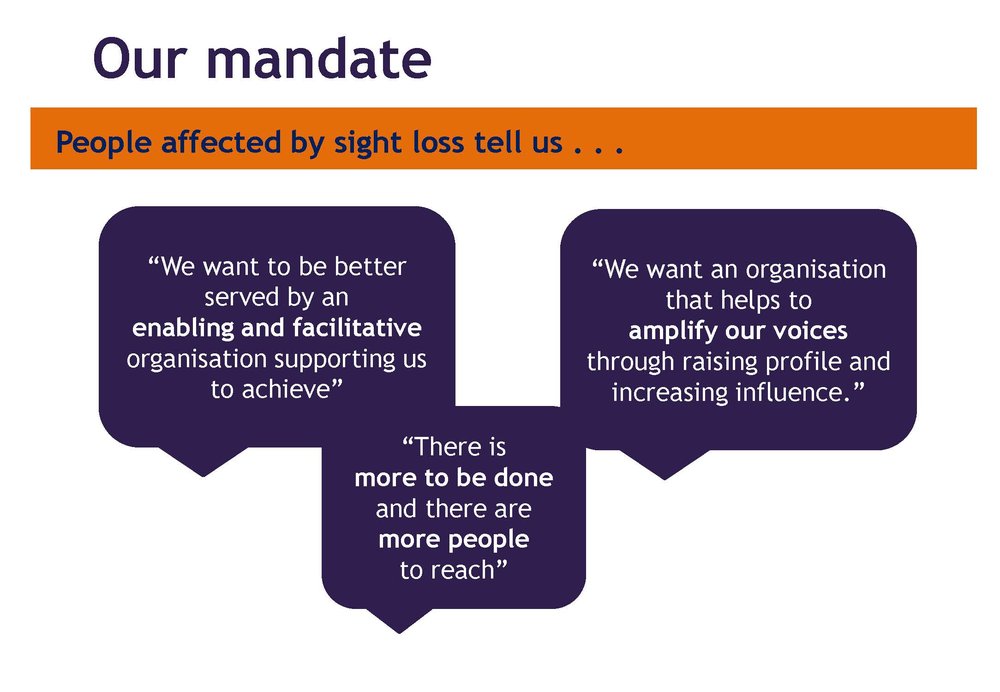Annual report and strategic direction

There are 35,000 people currently affected by sight loss in Leicester, Leicestershire and Rutland and that number increases by many hundreds of people each year.
With growing evidence that sight loss is on the rise, Vista’s services are needed more than ever, and that need is only set to grow.
Our recent consultation with people affected by sight loss in the region resulted in over 400 responses. They told us loud and clear that Vista’s services are important to them and make a positive difference.
They also told us the biggest barriers to living a good life included the general lack of:
· engagement with other people affected by sight loss
· access to training and support with technology
· local and practical support for essential services
· understanding of sight loss and how it impacts people
· accessibility and provision of appropriate transport.
We also know the cost of living crisis and cuts to local services have made life more difficult for many people. For example, in the last year, our Eye Clinic Liaison Officers working at Leicester Royal Infirmary supported 16% fewer newly diagnosed people than in the previous year due to strikes, cancellation of clinics and staff shortages in the NHS.
It's clear there is much more work to be done, and that we cannot do it alone. So we will continue collaborating with local partners to ensure people affected by sight loss don’t fall through the gaps and build on this to maximise our reach and positive impact for local people.
To better meet the needs of local people affected by sight loss, now and in the future, we took the difficult decision to sell New Wycliffe, Kathleen Rutland and Applegarth Care Homes. Our longer-term strategy, based on feedback from local people, is to move away from residential care so we can focus on the growing needs in the community. This shift will enable Vista to have more positive impact for affected people in our region in the years to come.
To learn more about our impact over the last year and our future plans: